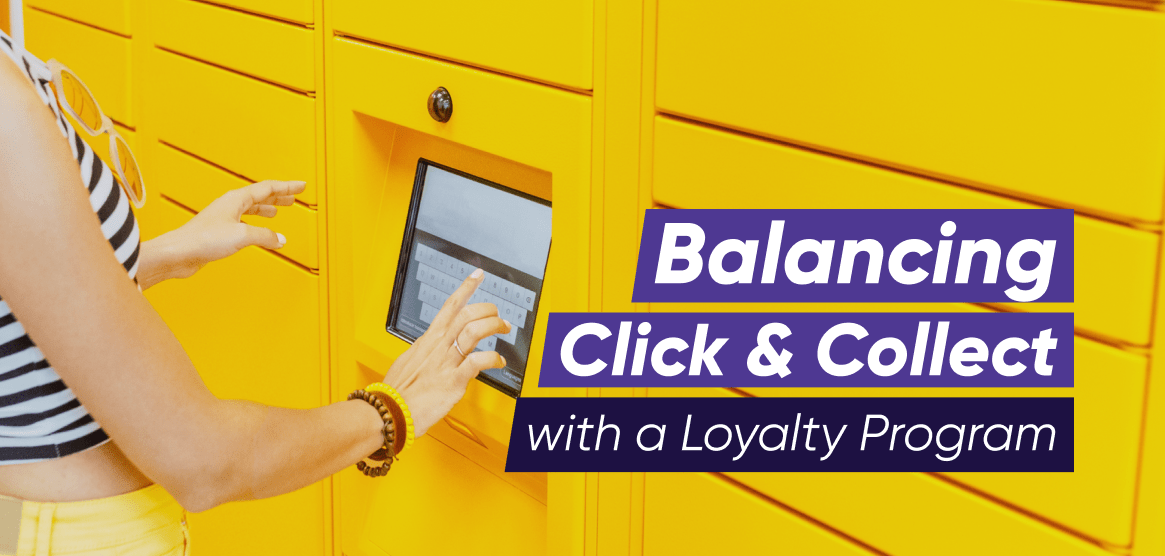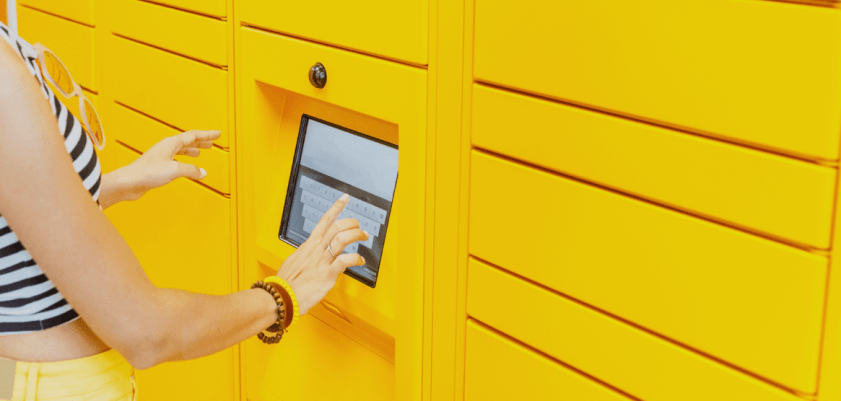Click and collect is one of the shopping models that gained significant traction during the lockdowns of 2020. And for a good reason: it streamlines logistics for retailers, and means customers are no longer dependent on delivery services. This approach has its drawbacks, however. Through click and collect, the gap between customers and brands grows even larger, as companies lose out on valuable touchpoints. And because it’s impossible to turn people away from a trend they like, the only prudent choice for retails is to find a way to personalize the shopping experience and generate loyalty in other ways.
What Is Click and Collect, and What Are Its Benefits?
Also known as ‘buy online, pick up in-store (BOPUS), click and collect refers to a hybrid shopping model where customers order a product online, and then pick it up at a physical location, whether that be a store, a designated pickup point, or a locker.
Click and collect has been steadily adopted by more and more customers in recent years, to the point where BOPUS was considered the most valuable aspect of the retail shopping experience by 40% of customers, according to a 2019 survey by iVend Retail.
It’s not hard to see why:
- Customers can save on shipping fees
- Buying online is more convenient, while dropping by at the pickup location is still faster than shopping in-store
- The process is more reliable and secure than regular delivery
- There’s no need to wait around for the delivery guy
- During the lockdown, customers could avoid direct contact with others by picking their packages up from lockers, like the Amazon Hub Locker+
Click and Collect in 2021 – From the Retailer’s Perspective
Many eCommerce companies prefer to rely on click and collect, as they no longer need to worry about traditional shipping. Omnichannel retailers also benefit from this shopping method, as they can repurpose unused real estate into collection points. Others can dedicate a part of their stores to pick-up points and train their staff to upsell products to BOPUS customers.
However, there are several underlying issues regarding click and collect. First of all, not all businesses are suited for it. The system works best for groceries & supermarkets, electronics stores, and fast fashion boutiques. It’s less likely someone would pick up pre-assembled furniture or a refrigerator on their own, while fans of luxury fashion might find this method too impersonal.
Furthermore, click and collect effectively ruins in-store customer engagement. Pickup points and lockers only work for large, established eCommerce brands like Amazon, or IKEA with its unassembled, easily portable furniture. Unless the collection point is inside the store, customers won’t set foot on your premises anymore. But even if the collection point is located in your store, customers are likely to enter, get their package and leave without exploring — upselling to such hasty customers is a real challenge.
But offline retailers aren’t the only ones to witness the downsides of click and collect. Even for eCommerce brands, retaining BOPUS customers is a real challenge, as they no longer base their purchase decision on brand love, but rather on the geographical convenience of the pickup points. This is even worse than discounts because establishing new collection points and training new staff consumes far more time and money than offering a markdown.
Balancing Out Click and Collect With a Loyalty Program
Click and collect is reminiscent of the Instagram Shopping phenomenon, as both channels sacrifice direct engagement with customers to deliver a more convenient shopping experience.
There are a number of ways you can make up for the lost touchpoints and entice people to spend more time with your brand—loyalty programs being one of them. With a loyalty program, you can engage customers outside of the buying cycle to stay on the top of their minds, as well entice them to buy from your brand, even if your pickup point isn’t the most convenient.
Last but not least, loyalty programs are capable of driving other business KPIs and can be tailored towards the specific characteristics of eCommerce or omnichannel brands, so they offer loads of additional value in addition to balancing out the drawbacks of click and collect.
5 Loyalty Program Features to Use If You’re Considering Click and Collect
1. Experiential Rewards
Next-gen loyalty programs can do so much more reward-wise than simply redeeming points for coupons. The emphasis should be on the experience: digital gifts come and go, but if you add a small freebie to the customer order, or simply print the coupon on stylish paper and place it into the box, then the reward instantly becomes more memorable.
2. Badges & Challenges
On your loyalty program’s membership page, you can track member activity, and encourage your members to repeat certain actions with a series of badges or challenges. For instance, if a customer goes into your store to pick up a package but also buys something while identifying themselves at the counter, then they can get a special corresponding badge—and earn benefits in the process.
3. Incentivized Profiling
A more online-focused feature (though it can also be used on in-store devices too) is incentivized surveys. Customers who fill out the surveys receive loyalty points or other perks in return. This feature helps to cover the distance created by click and collect, allowing you to learn more about customers’ habits, preferences, and favorites. Even better, this data can be directly fed into your marketing automation platform to deliver more personalized emails and content.
4. Surprise & Delight
The data you gather through surveys can also be put to good use creating surprise moments that feel personal. For instance, if you know about a member’s favorite product category, you can build a segment around it. You could give members who order through click and collect a small greeting card with a message and product recommendations in their order, tailored directly to this segment’s preference.
5. In-Store Gamification
If you put a click and collect pickup point directly in your store, consider installing a few tablets or kiosks as well. Why? Because they can be geared towards displaying gamified loyalty program features, like treasure hunts or prize wheels. Any customer who comes to pick up a package might want to try it out, enroll in the loyalty program, or venture further into your store to explore.
For more tips about gamification in loyalty programs, download our ebook.
Enhance Click and Collect Today
Click and collect in itself isn’t a bad trend, but you should think about ways to enrich it so you won’t miss out on valuable opportunities for customer engagement. A loyalty program is an ideal tool that helps you create new touchpoints.
If you’re interested in starting a discussion about next-gen reward systems, our experts are more than ready to help you. Feel free to include us in your loyalty program’s RFP process or book a demo to see what we have to offer.
In the meantime, let me share our most successful ebook with you. It shows you everything you need to know about designing a top-notch loyalty program.


